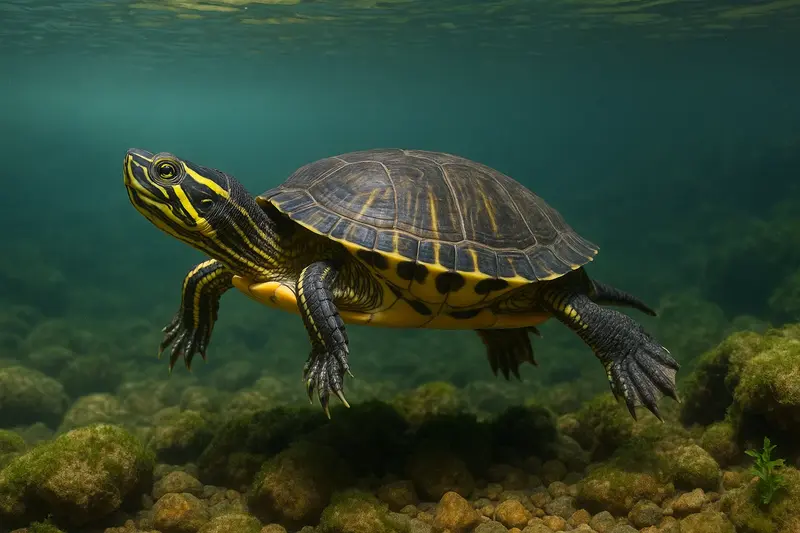The Yellow-Margined Box Turtle (Mauremys mutica), commonly referred to as the "yellow-throated turtle," is a semi-aquatic species widely distributed in southern China and parts of Southeast Asia. Frequently seen in captivity, this species raises questions among turtle keepers: is it a deep-water turtle? This article analyzes its ecological preferences, behavioral traits, and physiological adaptations to determine whether deep water suits this species.

This species is primarily found in southern China (including Guangdong, Fujian, Hainan, Guangxi, and Taiwan), as well as Vietnam, Laos, and the Ryukyu Islands of Japan. It favors warm, humid subtropical and tropical climates.
Yellow-Margined Box Turtles inhabit slow-moving or still water bodies, such as:
Irrigation canals
Lake margins
Stream shallows
Rice field ditches
These environments typically have shallow waters (10–60 cm deep) with abundant aquatic vegetation and cover.
As air-breathing reptiles, these turtles must surface frequently. If kept in deep water without easy access to the surface, they risk drowning.
Their limbs have partial webbing, offering moderate swimming ability. They perform best in shallow or moderately deep water but are less agile than fully aquatic turtles like sliders (Trachemys spp.).
This species avoids fast-flowing water and prefers calm or stagnant conditions, indicating poor suitability for deep, flowing environments.
These turtles are active during the day, foraging both in water and on land. At night, they rest at the bottom or under aquatic vegetation.
They bask frequently on rocks, floating platforms, or shallow banks to regulate temperature and metabolize vitamin D.
Unlike true aquatic turtles, Yellow-Margined Box Turtles often leave the water to rest, bask, or forage, aligning with a semi-aquatic lifestyle.
Juveniles: 5–15 cm to ensure easy breathing
Adults: 20–40 cm, with accessible platforms and basking areas
Slow-moving or still water
Clean and filtered, with regular water changes
Habitat enrichment: hiding spots, basking ramps, aquatic plants
| Species | Habitat Type | Deep Water Tolerant | Key Traits |
|---|---|---|---|
| Yellow-Margined Box Turtle | Still/Shallow Waters | No | Semi-aquatic, needs frequent air and basking |
| Red-Eared Slider | Lakes/Deep Ponds | Yes | Strong swimmer, adapted to deep water |
| Map Turtle | Rivers/Deep Pools | Yes | Prefers flowing, deeper habitats |
| Chinese Pond Turtle | Ponds/Streams | No | Similar to Mauremys mutica; prefers moderate depth |
In conclusion, the Yellow-Margined Box Turtle is not a deep-water species. Its respiratory needs, swimming ability, and behavioral patterns indicate a preference for shallow, calm water environments. As a semi-aquatic turtle, it thrives in habitats that allow basking, terrestrial access, and safe surfacing. In captivity, deep water setups may induce stress or health issues. Understanding this species' ecological niche is essential for optimal care and conservation.
animal tags: Mauremys mutica
We created this article in conjunction with AI technology, then made sure it was fact-checked and edited by a Animals Top editor.